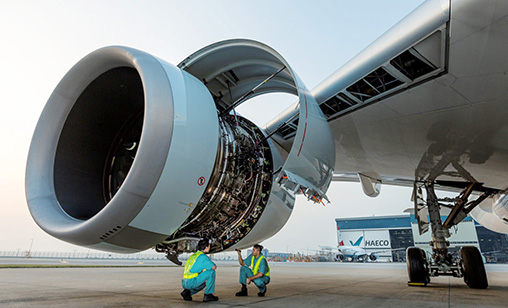Industry Insight Special Report
Asia-Pacific needs thousands more aerospace technicians
July 10th 2025
The daunting task of finding tens of thousands of new pilots in the next two decades is not the only challenge airlines face. Read More » Boeing’s latest Pilot and Technician Outlook, covering the period to 2043, estimates that apart from the 674,000 new pilots global airlines will require in the next 18-20 years, they also will have to find 716,000 new maintenance technicians and 980,000 new cabin crew.
More than a third of these employees, Boeing forecasts, will be required by airlines in the Asia-Pacific, including China. It forecasts a requirement for 296,000 maintenance technicians and 370,000 cabin crew across all airlines in the region.
 |
“As commercial air travel returns to its dominance post-pandemic, the demand for training and related services has accordingly shown signs of faster recovery, although the industry still faces lingering challenges in meeting this demand,” Boeing wrote.
“Among them are insufficient training capacity to support significant personnel shortages and the lag time necessary to bring personnel online while continuing to prioritize safety.
“To support the rapid recovery and growth driven by expansion of global fleets, the aviation industry will need a long-term strategy that addresses upcoming labour challenges.
“Investments in early career development programs and outreach efforts that spark excitement among future aviators will be essential to a healthy aviation market for years to come.”
Saxon Aerospace, a U.S.-based aviation recruitment firm, said demand for Aircraft Maintenance Technicians (AMTs) is soaring. “Several factors are contributing to this increasing need for skilled professionals, making it one of the most pressing issues in the sector,” it predicts.
“Firstly, global passenger numbers are rebounding and surpassing pre-pandemic numbers, driven by increased connectivity, tourism growth and economic recovery.
 |
“More flights mean more aircraft requiring regular maintenance to ensure safety and compliance, placing additional pressure on the existing workforce.
“Secondly, an ageing workforce is leaving a gap that is hard to fill. Many seasoned AMTs are nearing retirement, taking decades of expertise with them.
“The pipeline of new talent entering the field is insufficient to replace these retiring technicians, leaving a significant shortfall in skilled labour.
“Thirdly, advances in technology and the introduction of next generation aircraft are adding new layers of complexity to maintenance tasks.
“Modern aircraft incorporate advanced systems and materials that require specialized knowledge and training, increasing demand for highly skilled technicians.
Finally, Saxon said, the global aviation trends of fleet expansion and sustainability are amplifying the need for maintenance expertise.
“Airlines are investing in more fuel-efficient and eco-friendly aircraft, which have unique maintenance requirements. This evolution in the industry makes the role of AMTs even more critical for ensuring smooth operations.”
Anna Travers says:
September 17th 2025 03:14am